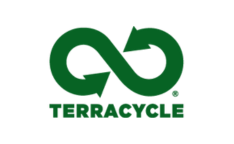When was the last time we held the beauty industry to a standard as high as the one created for us? From type 1A to 4C hair, we are taught our unique strands and hair types must fit a certain mold, that our looks should aspire to a certain ideal. With this, personal care and beauty is a multi-billion dollar industry, spanning high-end makeup to all-in-one body wash and shampoo.
All the while, the beauty industry largely packages for convenience, aesthetics, and cost savings, often at the expense of our planet; it is estimated 120 billion units of packaging are produced every year by the global cosmetics industry, most of which are not widely recyclable.
Thus, tons of plastic pour into the ocean and are littered in the environment every year, not to mention all the material that could have been used to make new products and packaging, like cosmetics containers!
It’s a complex issue you can put a dent in while keeping your skin and the planet looking flawless. Here are some simple “dos and don’ts” for types of packaging to look out for when shopping for beauty products:
Plastics to avoid
There are seven types of plastics. The term Resin Identification Code (RIC) may sound intimidating, but it identifies the type of plastic used in a container. This number is found inside a triangle and typically located at the bottom of the bottle. Please note what your municipality accepts ultimately determines recyclability, so check with them when recycling locally.
Generally speaking, the ideal numbers are #1 (PET) and #2 (HDPE) because they are usually recycled locally. However, #3 (Vinyl or PVC), #4 (LDPE) #6 (PS or EPS, also known as Styrofoam), and #7 (Other) are infrequently locally recyclable and will go right into the trash if placed in your recycling bin. However, no matter the resin number, colored plastic and small and complex items are generally non-recyclable.
Why would a beauty brand use plastics that aren’t recyclable? LDPE is lighter than other types of plastic, for example, and from a shipping perspective, companies opt for this because it gives them the ability to maximize space on a truck, minimize breakage, and have some flexibility with the package design, literally and figuratively.
Recycling Dos
Our number one tip, again, is to check with your local program to see what they accept, but a general rule of thumb is if you purchase plastics, buy in larger sizes. Small plastics of eyeshadow pans, eye cream pots, cotton swab sticks, mascara wands, and the like are harder to recycle because they fall through the cracks at recycling centers.
Our next tip is often quite surprising, as many high-end makeup and cosmetics brands employ this material, so please brace yourself: black and dark plastics are not usually recyclable, and as mentioned earlier, colorful plastics are not recyclable. Why? Colored plastics cannot be turned into any other color, except if white or clear.
So what do we do now? Keep an eye out for sustainable beauty brands teaming up with TerraCycle® to provide a free, national recycling solution for their packaging, and tell your favorite clean makeup and cosmetics brands to start working with us!
Recycling Don’ts
If you don’t like free, that’s okay, even good: free cosmetics samples are often dispensed in packaging that is non-recyclable. For example, during a tour down the hair care aisle, we recently spotted a deep conditioning pouch. This seems to be a growing trend, but the existence and use of small pouches is prevalent across industries.
We also see this with the use of individual portion packs, or sachets, small, single-use, plastic pouch-like items that are inexpensive to make. They come with our takeout food, as cosmetics samples, and as an easy way to take a vitamin cocktail, but these often end up littered or landfilled and are prone to end up in oceans and waterways due to buoyancy and small size.
Bigger is by no means better, but again, the high-value or larger the package, the more likely it is to be recycled. If it is small, flexible, a color, or very lightweight, it is generally a recycling don’t, as is being a “wish-cycler,” so please think before you put it in the bin!
3 Rs Beauty Cheat Sheet: Reduce, Reuse, Recycle
There is light at the end of the tube. Instead of using products with hard-to-recycle plastics, opt into refillable hair product programs or hair care bars. Our sister brand, Loop, has partnered with Plaine and many other personal care and beauty brands to help us reduce waste with reusable containers for products we like while eliminating single-use. Hair care bars are super underrated, but effective, eliminating the need for packaging altogether.
We understand that switching your hair care routine might be easier said than done, so to use the products that work for you without the packaging guilt, try our Bathroom Separation Zero Waste Box™, which you can fill with used hair care staples, loofahs, rubber duckies, etc.; we’ll clean, separate, and recycle it all for you. If only our hair and skin care could be that easy!
Do you have any favorite clean beauty brands making a commitment to leave your skin, hair, and the planet better than they found it? Tell us in the comments!
